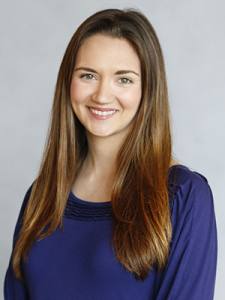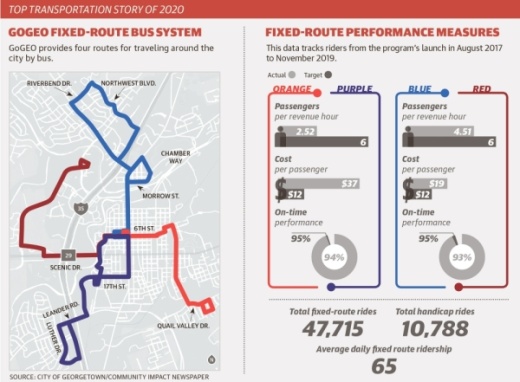When GoGEO’s fixed-route bus system was launched in fiscal year 2017, council committed to a three-year service agreement with Georgetown Health and Capital Metro, Director of Public Works Ray Miller said.
He said when budget discussions begin this year, council will need to decide if it wants to continue with the fixed-route system as-is, expand upon the system, get rid of it altogether and offer only a rideshare or other similar program, or any other options.
Prior to GoGEO, the city was serviced by the Capital Area Rural Transportation System, which offers regional transportation for the non-urbanized areas of Bastrop, Blanco, Burnet, Caldwell, Fayette, Hays, Lee, Travis and Williamson counties.
“Once we hit 50,000 people, we were considered urbanized,” Communications Manager Keith Hutchinson said.
When a city adds a fixed-route bus system, federal law requires a complementary handicap service, or paratransit, also be installed, according to Miller. He said this fact must be kept in mind amid discussions of replacing the GoGEO buses with a ride-share program.
“You must have the handicap service, and Lyft vehicles are not handicap-accessible; it has to be through a bus or a van,” he said. “There are some rideshare programs coming out, though, where you can use whatever vehicles you like.”
The city hopes to have a contract with Lyft approved at the end of January, Miller said. The new Lyft program will be available to all Georgetown residents; however, those living in census tracts designated medium- to low-income will receive promo codes for rides.
“But not everybody can use Lyft,” Miller said regarding the program possibly replacing the fixed-route bus system. “Some folks might not have the ability to get a credit card or have a smartphone.”
“We’ve talked to people who really rely on GoGEO to get around,” Hutchinson added. “Either because they choose not to use a car or because they have a disability, we talked to one person with vision issues and one in a wheelchair [for example].”
When the fixed-route bus system was installed, council established performance measures to track success, Miller set. Council set an annual ridership measure of 40,000. Last fiscal year saw just under 22,000 rides, according to Miller.
“It’s still a fairly young system trying to gain momentum,” he said. “We get comments about it not being spread out more, such as going farther down Williams or University drives, and folks say they have to walk too far to get to a stop.”
Miller said more stops and added routes is an option, but expanding operations would mean increasing funding.
“If we expand the system the cost is going to go up,” he said. “We’ll see what council would like to do.”
Meanwhile, the city will continue to promote GoGEO.
“We’re sending a mailer to people living within 900 feet of a GoGEO stop that includes a pass for a free ride,” Hutchinson said. “We hope once people use the bus, they’ll want to use it more.”





